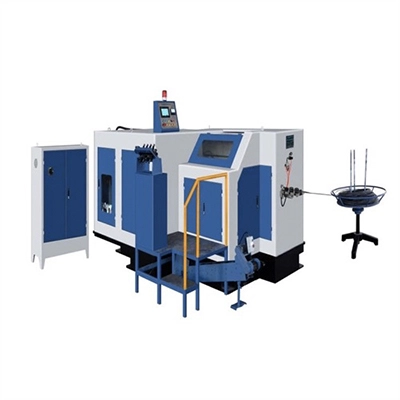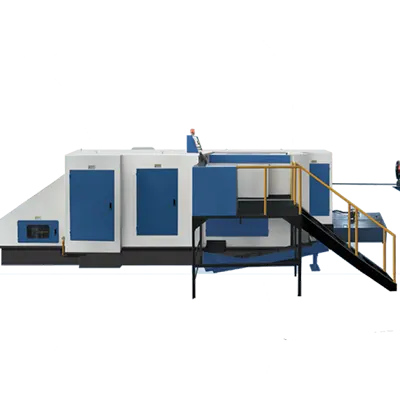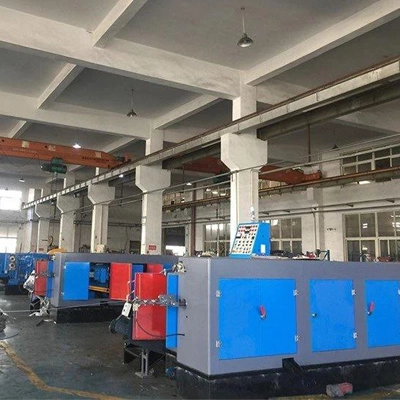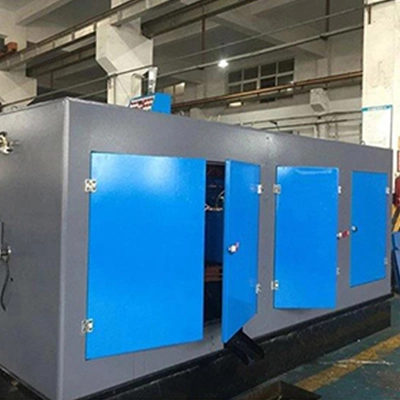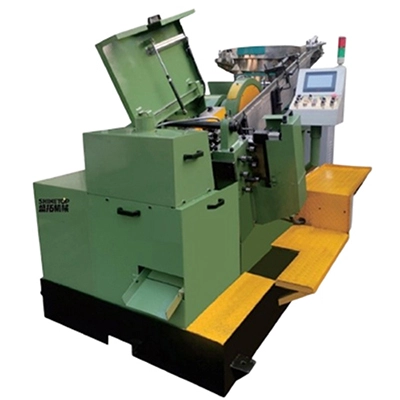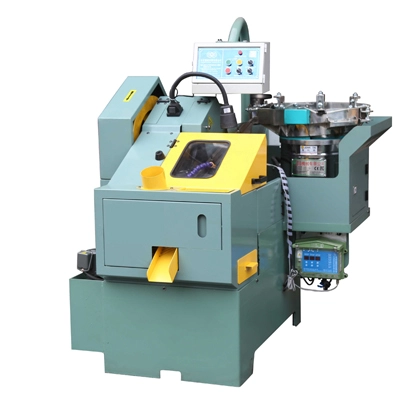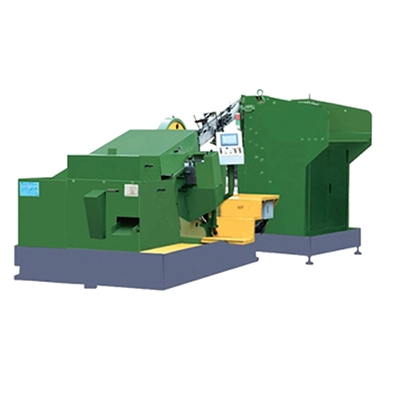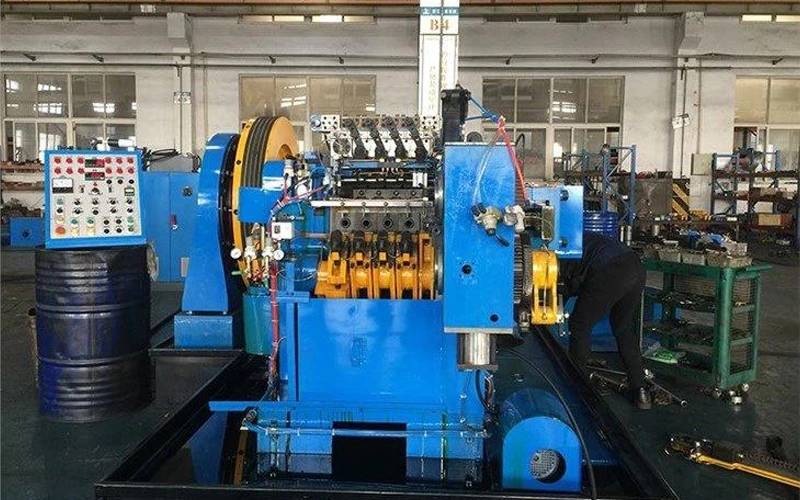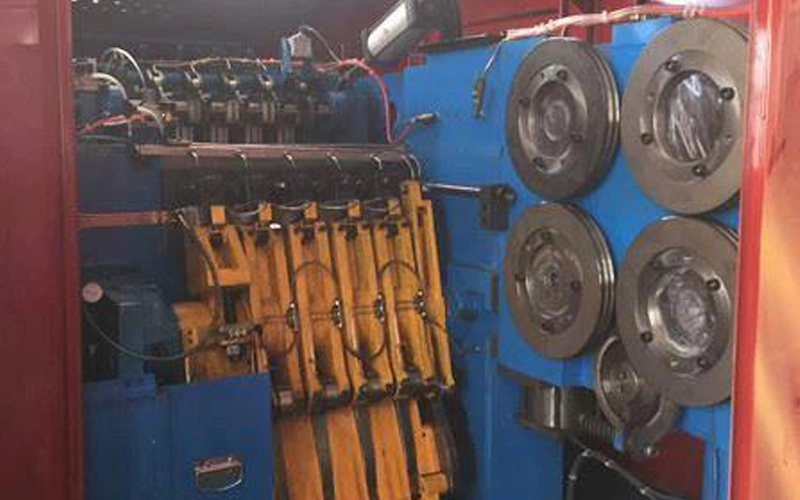Bolt is a fundamental component in various industrial applications ranging from construction to the automotive industry. Precise manufacturing of bolts ensures the integrity and reliability of fastening systems. Bolt cold heading machine is one of the most critical machines in the production process of bolts. The cold forming machine manufacturers play a crucial role in providing these essential machines. This article will delve into the working principle of bolt cold heading machines, understand how these machines operate, their key processes, and their importance in manufacturing high-quality bolt parts.
What is a Bolt Cold Heading Machine?
A bolt cold heading machine, also known as a bolt parts forming machine, is a machine specifically designed to shape wire into the desired bolt configuration. The machine integrates multiple processes, including cutting, cold heading, and thread rolling, making the production process from raw material to finished bolt efficient and rapid. Among these, the multi station cold forging machine stands out for its ability to perform several operations in a single run, further enhancing efficiency and precision. Bolt cold heading machines, especially multi station cold forging machines, are indispensable assets in large-scale production environments as their precision, speed, and consistency are crucial.
Key Components and Operations of Bolt Cold Heading Machines
1. Wire Feeding and Cutting
The first step in the bolt production process is feeding the wire into the bolt cold heading machine. The wire, usually made of steel or other durable materials, is continuously fed into the machine through a wire feeding mechanism. Once the wire is correctly positioned, the bolt cold heading machine cuts the wire into specific lengths suitable for bolt production. This initial stage sets the foundation for subsequent forming processes.
2. Cold Heading Process
Cold heading is the core operation of the bolt cold heading machine, crucial for forming the bolt head. In this process, the cut wire blank is transferred to the dies, where a series of rapid, high-pressure impacts are applied through mechanical or hydraulic presses. These impacts deform the wire blank, compressing and shaping it into the desired head shape, whether hexagonal, square, or any other shape required by the customer. Cold heading ensures a robust grain structure of the metal, thereby enhancing the bolt's strength and durability.
3. Thread Rolling and Finishing
After head formation, the bolt cold heading machine moves into the thread rolling stage. During this phase, the bolt blank is rolled between two dies to form the threads on its shank. Unlike thread cutting, thread rolling does not remove any material but instead strengthens the threaded area by metal displacement. The thread rolling process is renowned for its efficiency and ability to produce precise, uniform threads, which are critical to the performance of the finished bolts.
Finally, the bolts undergo secondary processes such as heat treatment, plating, and inspection to ensure they meet the necessary mechanical and dimensional specifications. These final steps guarantee that the bolts can be used in demanding applications.
The Importance of Bolt Cold Heading Machines in Manufacturing
Bolt cold heading machines play a key role in the bolt manufacturing industry because they can produce high-quality bolts at high speeds. To complement these machines, a high speed thread rolling machine is often used to ensure the threads are formed quickly and accurately. The precision and efficiency offered by bolt cold heading machines, along with the capabilities of a high speed thread rolling machine, contribute to consistent quality control of bolt sizes and mechanical properties. This reliability is essential for applications where bolt failure is unacceptable, such as structural engineering and automotive components.
Furthermore, bolt cold heading machines minimize material waste, as the cold heading and thread rolling processes are designed to utilize almost all the wire blank materials. This not only reduces production costs but also aligns with sustainable manufacturing practices.
In conclusion, understanding the working principle of bolt cold heading machines helps in appreciating the complex processes involved in bolt manufacturing. From wire feeding and cutting to cold heading and thread rolling, each stage is meticulously designed to produce bolts that meet strict industry standards. Investing in high-quality bolt parts forming machines ensures the production of durable and reliable bolts, capable of maintaining the structural integrity of various industrial applications.
 Thread Cold Rolling Machine
ST-4R-50 High-Speed Thread Rolling Machine ST-8R-83(120) High-Speed Thread Rolling Machine ST-6R-80 High-Speed Thread Rolling Machine ST-4A-50 High-Speed Thread Rolling Machine ST-4A-25 High-Speed Thread Rolling Machine ST-10N-150 High-Speed Thread Rolling Machine ST-30N High-Speed Thread Rolling Machine ST-60N(M16-150) High-Speed Thread Rolling Machine ST-60N(M16-200) High-Speed Thread Rolling Machine ST-12N-150 High-Speed Thread Rolling Machine ST-3A-25 High-Speed Thread Rolling Machine ST-3 High-Speed Thread Rolling Machine ST-80N High-Speed Thread Rolling Machine ST-90S High-Speed Thread Rolling Machine ST-100-M40 High-Speed Thread Rolling Machine ST-70N End Milling Machine
Thread Cold Rolling Machine
ST-4R-50 High-Speed Thread Rolling Machine ST-8R-83(120) High-Speed Thread Rolling Machine ST-6R-80 High-Speed Thread Rolling Machine ST-4A-50 High-Speed Thread Rolling Machine ST-4A-25 High-Speed Thread Rolling Machine ST-10N-150 High-Speed Thread Rolling Machine ST-30N High-Speed Thread Rolling Machine ST-60N(M16-150) High-Speed Thread Rolling Machine ST-60N(M16-200) High-Speed Thread Rolling Machine ST-12N-150 High-Speed Thread Rolling Machine ST-3A-25 High-Speed Thread Rolling Machine ST-3 High-Speed Thread Rolling Machine ST-80N High-Speed Thread Rolling Machine ST-90S High-Speed Thread Rolling Machine ST-100-M40 High-Speed Thread Rolling Machine ST-70N End Milling Machine English
English 中文
中文
